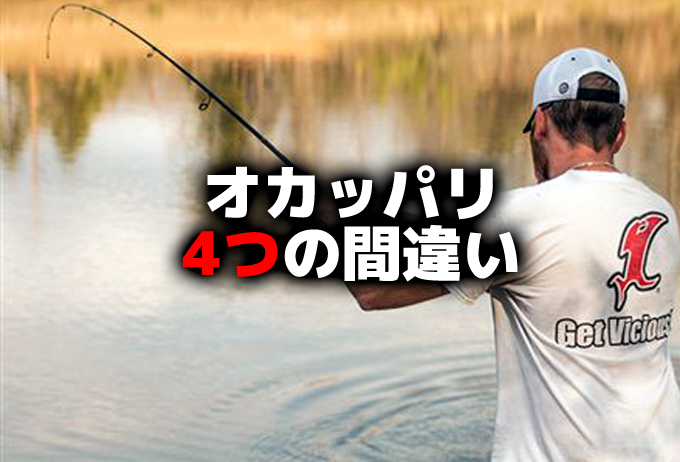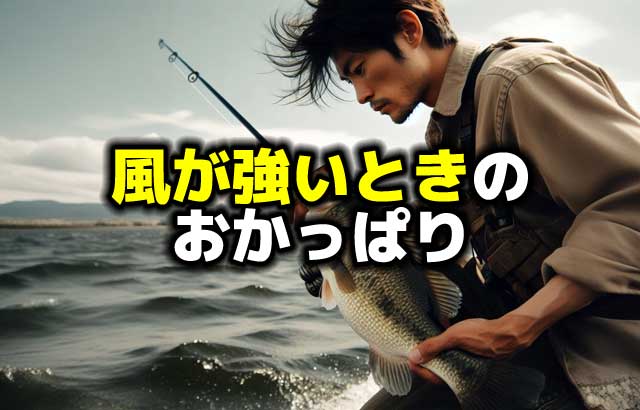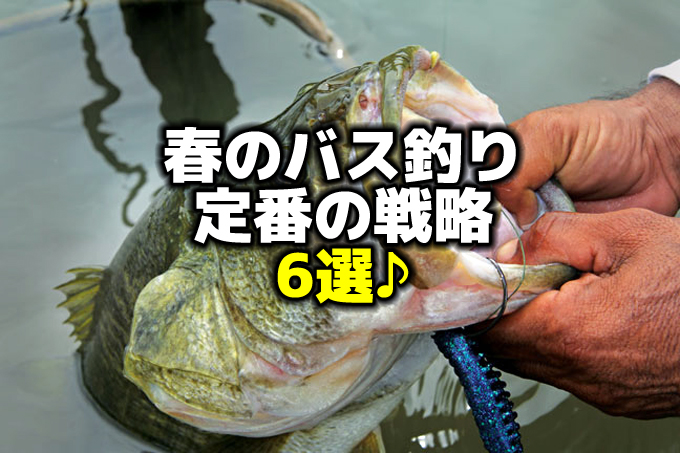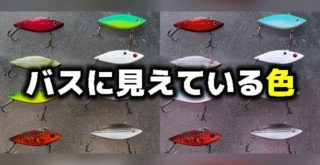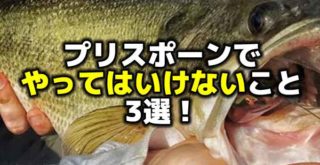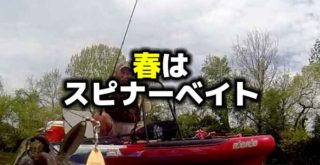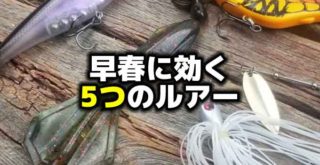地域別・プリスポーンバスの行動パターン

Photo by in-fisherman.com
こんにちは!店長の小山です!
本日は海外サイトより、”Patterning Prespawn Bass”という記事を引用してご紹介いたします。
引用先:in-fisherman.com ”Patterning Prespawn Bass” by Steve Quinn – February 01, 2018
そろそろプリスポーンバスが各地で釣られている頃でしょうか。この時期は月齢カレンダーと週間天気予報を見ながらソワソワされている方は多いのではないかと思います。
しかし、私の住む長野県北部という地域には長い冬があります。
多くの池や湖は氷が張ってしまい、3月ごろまで融けないところが多いのです。ここよりも北部の地方になれば、もっと長い冬を過ごしている方も多いことでしょう。プリスポーンのバスのことを考えることはできますが、実戦となるとなかなかできないものです。
そういう北部の方々にとって、プリスポーンのバスを釣りに行くという選択肢はありません。氷が融けたら釣りができる。その時がたまたまプリスポーンだったというだけなんですよね。
ちょっと待ってください。ということは、氷が張っていても水の中のバスはプリスポーンなの?ということになるのですが、地域差があってもバスは同じ時期にプリスポーン状態になるのでしょうか。
プリスポーン状態というのは、越冬場所を離れ、シャローへ上がり、そこでフィーディングをして産卵に備え、いよいよ産卵するまでの期間のことを言いますが、人間のようにカレンダーを見ながら行動するわけではなく本能で行動しているバスですから、どこに住んでいようが氷が張っていようが、スポーニングに向けて動き出すタイミングというのは結構決まっているようですね。
ここは南北に長い日本ですから、北と南で同じプリスポーンといってもだいぶ違いが出てきます。北部と南部それぞれのプリスポーンのバスについて知りたくなりますよね。
そこでこの記事ですが、これはアメリカのゲームフィッシング専門メディア「In-Fisherman」の記事で、地域別のプリスポーン状態のバスの解説がされています。
ここではプリスポーンの状態をさらに「解氷」「早期プリ」「中期プリ」「後期プリ」という4つの段階に分け、それぞれの段階毎のパターンやルアー選択について触れられています。
ちょっと長くなると思いますが、ぜひ読んでみてください。
緯度の違いによる行動
As you read this, some prespawn bass patterns already have expired in the most southerly part of the largemouth’s range. Biologists and guides in Florida assure me that bass may begin spawning there in December. Yet, curiously, some fish there continue to bed into May. In Minnesota, by contrast, once largemouths begin bedding in a lake, the last ones to spawn, usually young small adults, may be guarding fry just a couple weeks later.
Florida bass are in no rush, as mild conditions prevail for months. But in a climate considered far harsher for a warmwater fish, northern bass must push the process of producing young that can grow large enough by onset of the next winter to survive its rigors. And adults must rush to resume feeding as their time for growth is short. In waters between those geographic extremes, local conditions contribute to the commencement and duration of the Prespawn Period.
あなたがこれを読んでいるころ、ラージマウスバスの住む最南端の地域ではプリスポーンの状態はすでに始まっています。 フロリダの生物学者やフィッシングガイドに言わせれば、バスは12月ごろからスポーニングを意識し出すと言います。 それでも不思議なことに、その地域のバスも5月からスポーニングするものもいます。 これとは対照的に、北部のミネソタ州では、ラージマウスバスが初めてベッドを作った数週間後には、最後の小さな個体が産卵し、稚魚を守っている状態になることもあります。
南部のフロリダのバスは、何ヶ月もの間穏やかな状況が続くので急いでいません。 しかし北部のバスは、温水性の魚にとっては厳しいと考えられている気候の中で、その厳しさを乗り切るために来年の冬までには十分に大きく成長できるタイミングで孵化できるようにプロセスを進めなければなりません。 そして成長するまでの時間が短いので大人のバスはフィーディングを急がなければなりません。 こういった地理的に真逆にあるフィールドでは、地域の状況によりプリスポーンの始まりや期間に影響します。
南北の気温の役割
Over the course of a year, south Florida bass inhabit temperatures from about 58°F to 90°F, a range of some 32 degrees. Far northern fish, in contrast, endure long stretches in the 30°F range, and sometimes up to 83°F or so, nearly twice as broad a spectrum. This tends to make them far more environmentally resilient, timing their behavior more closely to day length than water temperature. Southern bass are more temperature-dependent, but also have extended phases of activity. Their Coldwater Period is non-existent, so spawn-related periods are greatly extended, along with the Summer Period.
Within days of ice-out, and occasionally before it, northern river bass and some lake-dwelling fish evacuate wintering sites and move to shallow prespawn feeding areas, which may also serve as spawning bays a month or so later. They’re willing to bite, though often spooky and picky in their lure preferences. Panfish anglers plying shallow backwaters and bays tangle with more then their share of big bass that can’t resist a tiny hair jig or softbait presented on a float. And there’s no telling how many big bass I’ve caught that still carry the little jig in their jaw, occasionally with a small float trailing behind.
The upper-40°F range (early prespawn) is prime time for smaller swimbaits as well as swim jigs that perform magic with a slow, crawling retrieve. In open areas, jerkbaits are deadly, fished at a slow cadence with long pauses. As waters warm, slow-falling lures also come into play: soft stickworms either Texas- or wacky rigged, and the classic Slug-Go, still hard to beat for mid-prespawn bass, as well as postspawn fish. Light jigs with large trailers that slow the fall also work, especially when shallow wood is present or new growth of submergent vegetation.
1年の間に、南フロリダのバスは約14℃から32℃まで、およそ18℃の温度差のなかに住んでいます。それとは対照的に、最北端のバスは-1℃から時には最大28℃まで、その差30℃という2倍近い広い範囲の温度差に耐えています。これは彼らをはるかに環境的に回復力のあるものにする傾向があり、それは水温よりも日照時間によって彼らのスポーニングのタイミングを計ります。南部のバスはより温度に依存しますが、それはまたスポーニングの段階にも広い幅を持つことにもなります。冷水期間が存在しないため、スポーニング期間は夏が近付くまで大幅に延長されるのです。
アイスアウト(解氷)からの数日以内、時にはその前から、北部の川のバスやいくつかの湖に住む魚は越冬地から出て、約1か月後にはスポーニングエリアとなるであろうシャローのプリスポーンのフィーディングスポットに移動します。彼らは警戒心が強くルアー的な好みこそ選り好みが激しいものの、食い気はあります。 ブルーギル釣りをする人がワンドの奥のシャローでウキの下に小さなヘアジグやワームを付けていると、それに抵抗できないビッグバスが競って食って来ます。ですから私も、ウキの下に小さなヘアジグを付けたものが上アゴに刺さっているビッグバスをいくつキャッチしたかわかりません。
水温4℃を超えると(早期プリ)、小型のシャッドテールワームや、ゆっくりと這うようなリトリーブでのスイミングジグが最高になるタイミングです。オープンエリアでは、ジャークベイトが有効で、ロングポーズを織り交ぜたゆっくりとした流れで釣ります。水が暖かくなるにつれて、ゆっくりとフォールするルアーも登場します。スティックワームのテキサスリグやワッキーリグ、そして中期から後期のプリスポーンのバスには昔ながらのスラッゴーが良く効きます。軽量のジグに大きなトレーラーを付けてフォールスピードを遅くしたものは、特にシャローにウッドカバーがあるときや水性植物の新芽が出てきたころには有効になります。
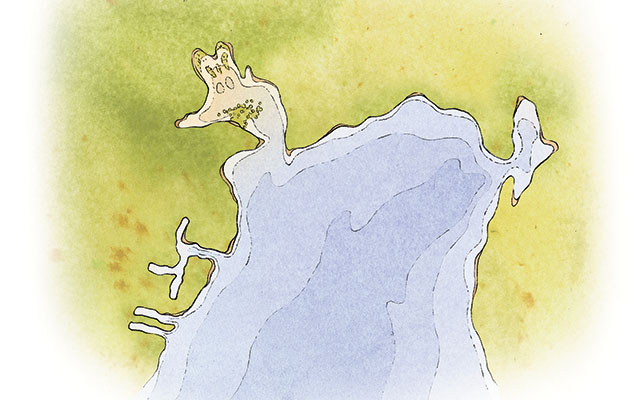
Image by in-fisherman.com
どこから始めるか
One phenomenon not typically found for northern prespawn bass is the concept of “staging areas." Reservoir bass often gather at spots of intermediate depth that offer a range of depths to hold at. One of the finest holes I’ve ever fished fits this definition. Years ago on February 1 in South Georgia, a companion named Les and I were exploring Lake Seminole, still one of my favorite bass waters. Water temperature was nudging into the low-50°F range. About mid-morning, we pulled into a small pocket along a creek channel bend with a deep wall of hydrilla on one side with standing timber as well. Les positioned the boat for us to cast parallel to the channel.
He immediately stuck a 4-pounder on a Manns 20+ crankbait and the fish thrashed lethargically toward the boat. After a cast with a jig went untouched, I picked up my crankbait rod as was soon fast to anther big prespawn female.
“Here’s a bigger one," Les boasted, lipping a fish over 7 pounds. Our action was almost non-stop for 10 minutes, with every fish from 4 to 7 pounds.
Suddenly, Les dropped his rod and walked back to the console of his Norris Craft. “We’re outta here," he stated in no uncertain terms. “My buddy Van Kennedy has a tournament here next week and I gotta give him this spot." With that we left the most amazing staging area I’ve ever found. And today we know Kennedy as the father of top-level Bassmaster Elite pro Steve Kennedy. Ol’ Les will never know how close he came to drowning that day!
北部のプリスポーンバスには通常見られない現象の1つに、「ステージングエリア」の概念があります。リザーバーのバスは、ミッドレンジの深さの場所に集まることが多いのですが、それにはさまざまな深さがあります。私が今までに見つけた最もすばらしいスポットの1つもこの定義に合います。何年も前になりますが2月1日のサウスジョージア(アメリカ南部)で、レスという仲間と私でセミノール湖を釣っていました。水温は10℃台前半まで上がっている時でした。午前中の半ばごろ、私たちはクリークチャンネルのカーブに沿って奥に立木とカナダ藻が生える小さなポケットを見つけました。 レスは私達がチャンネルと平行に投げれるようボートをポジショニングしました。
彼はすぐにマンズ 20+ クランクベイトで無気力な4パウンダーをボートにランディングしました。その後ジグを使ってキャストをしても何も触って来ませんでしたが、クランクに替えるとすぐに別の大きなメスバスを釣ることができました。
「またデカいのが来た!」とレスは自慢げに、7パウンダーを掴みました。私たちは10分間でほとんどノンストップで4ポンドから7ポンドまでの魚を釣りました。
突然レスはロッドを置き、ボートの操縦席に歩き出しました。 「ここから出よう」と彼はハッキリと言うのです。 「来週、私の相棒であるバン・ケネディがここでのトーナメントに出るので、彼にこの場所をあげようと思う。」ということで、私たちは今まで見つけた中で最も素晴らしいステージングエリアを離れました。そして今日、私達はケネディの父がトップレベルのバスマスターエリートのプロ、スティーブケネディであると知りました。レスはあんなに親しかったのに今日の今日まで知らなかったぜ!とのことでした。
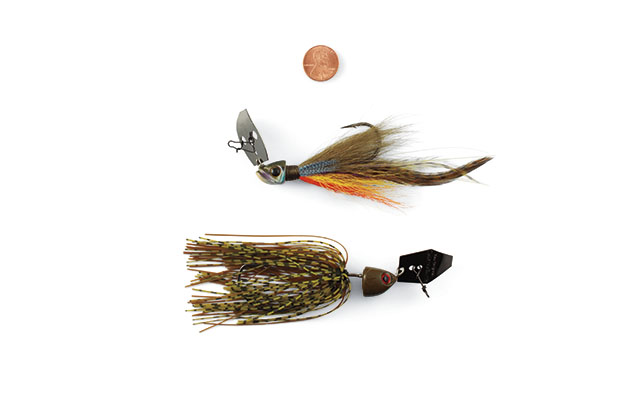
Photo by in-fisherman.com
Bass in mid-south latitudes stage in key areas where they can feed and hold, awaiting warming conditions that will pull them toward the bank. Staging areas often have several forms of cover and are located at key structural locations that allow bass a range of depths to hold at. Fish tend to hold deeper in the morning, moving closer to the surface on warm, sunny days to feed on shad and warm themselves. After staging on a spot for a time sometimes just a couple days, sometimes a week—the group may disperse across nearby flats, moving toward spawning areas. In other cases, the group may move along the creek channel ledges, upstream toward shallow spawning areas in warm shallow bays well off the main lake.
In many reservoirs, staging areas are easy to spot: Marinas and riprap points, found where bridges cross feeder creeks, are bass magnets during the Prespawn Period. These steep banks offer vertical structure and cover. Bluff banks offer a similar situation and are always work checking, especially were the bluff transitions to more gradual sloping gravel or sand. Such spots serve as current checks, slowing the downstream flow, and attracting baitfish and bass.
中部から南部にかけての緯度にいるバスは、バンクに向かって暖かい水が流れてきて留まり、フィーディングもできるという重要なエリアをキーとしてステージングします。ステージングエリアの多くは、バスがいたがるレンジになんらかのカバーや重要な地形変化を持っています。魚は朝のうちはディープにいて、暖かく晴れた日には水面に近づき、自分自身を暖めつつ、ベイトフィッシュを食べています。その場所でしばらく(時にはほんの数日、時には一週間)ステージングした後、 そのグループは産卵場所に向かい近くのフラットエリアへ散っていくようです。他には、本湖から離れた上流の暖かい浅いワンドの産卵場所に向かってクリークチャンネルの棚に沿って移動するグループもあるでしょう。
多くのリザーバーでは、ステージングエリアを見つけるのは簡単です。橋が支流のクリークに架かる場所にあるマリーナや岬のリップラップは、プリスポーンバスの付きやすい場所です。これらの急なバンクは縦ストラクチャーやカバーとなります。垂直岩盤のバンクでも同様の状況となりますので、特に垂直岩盤からなだらかな砂や砂利に変化するようなところを常にチェックします。そういう場所では流れもチェックします。増水傾向で流れが遅い場合はベイトフィッシュやバスを引き付けます。
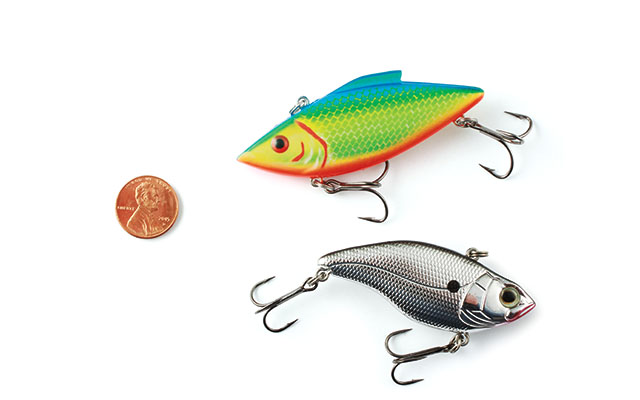
Photo by in-fisherman.com
バイトを得るには
Water temperature can be key this time of year, so keep your temp gauge front and center as you explore. Generally look for the warmest available water. The old adage to fish the northwest corner of a lake or creek arm is typically valid. Prevailing winds from that direction, common in spring in the northern hemisphere, are blocked by high banks, allowing the sun’s rays to warm the shallows. In reservoirs, I’ve found canals in the northwest corner that warmed to almost 50°F while ice shards floated in the main body, where the water was a frigid 39°F. Guess where bass want to go.
Wind direction also can be important. When strong winds push cold, main-lake water into bays and canals, the bite drops. Can’t say if the fish turn off or depart, but I tend to believe the latter. Conversely, in an enclosed embayment, the windward side can be best. That’s because the warmest water is in the upper couple inches of the surface. It floats on cooler layers so wind can pile warmer water on the windward side and bass respond. Again, it’s always hard to say if fish move in search of optimum conditions or those conditions boost their activity level.
Cold fronts in early spring push bass out to the deeper edges of a bay or off shallow flats, often to the 8- to 15-foot depths on inside turns near points that lead into bays. Changing conditions should determine the tackle and lures you choose.
この時期は水温が重要になる可能性があるので、エリアを探すときはフロントやセンターの魚探の水温を見てください。通常は最も暖かい水を探してください。古くから言われるような湖やクリークアームの北西の角を釣るという言葉は有効です。北半球の春によく見られる北西風は地形によって遮られ、太陽光がシャローを暖めることを可能にします。リザーバーでは、北西の端の水路が10℃近くまで暖まったのに対し、本湖では氷が浮かんでいました。そこでは水は約4℃でした。バスが行きたいところは分かるはずです。
風の方向も重要になります。強い風が冷たい本湖の水をワンドや水路に押し込むようだと、バイトは落ちます。魚の食い気が落ちるのかいなくなってしまうのかはわかりませんが、私は後者だと信じています。逆に、封鎖されたワンドでは、風上側が最善である可能性があります。なぜなら最も暖かい水は水面から数センチまでにあるためです。それはより冷たい水の層の上に浮かんでおり、風上側は暖かい水の層が厚くなっていくので、バスはそれに応じて上がってきます。繰り返しますが、魚が最適な条件を求めて移動するのか、それとも活動レベルを引き上げる条件を待つのかどうかを言い切るのは難しいです。
早春の寒冷前線は、バスをワンドのシャローフラットやワンドの入り口からディープへと追いやり、多くの場合、ワンドの内側にターンして入っていく岬の近くの深さ2.4〜4.5メートルラインです。状況が変わるということは、タックルやルアーも変えなければなりません。
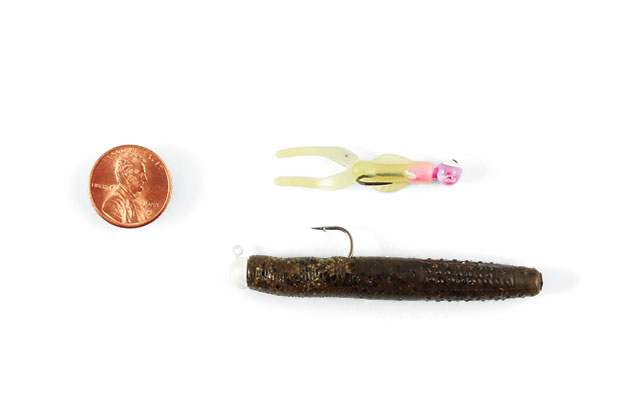
Photo by in-fisherman.com
プレゼンテーションをどうするか
The Prespawn Period is the most exciting time of year for anglers, as action can be outstanding, but we must be resourceful to read weather and water conditions, and make educated guesses on bass location and presentation. When you get the answer right, the bite can be lights-out.
Bass tend to group either in shallow bays, canals, or creeks, or in staging areas. Females are in the process of bulking up to their maximum weight just prior to the spawn so they feed heartily. In my former career as a fishery biologist, I always marveled that a good percentage of lunkers we caught by electrofishing in early spring had the tails of big gizzard shad (10 to 12 inches) sticking out of their gullets.
At times though, it’s a finesse bite, with either slow-moving softbaits or light jigs. If the bite is slow on spinnerbaits, chatterbaits, jigs, and cranks, downsize and slow your retrieve drastically. First dial in location, then work on finding the best baits. And don’t be afraid to fish memories. Bass often follow the same travel routes from year to year and find the same spawning locations, sometimes right down to one particular stump.
行動が目立つため、プリスポーン期間は釣り人にとって最もエキサイティングな時期ですが、我々は天気や水の状態を読み、バスの居場所やプレゼンテーションについて正しい推測をしなければなりません。答えが正しくなければ、バイトは遠のいてしまうことがあります。
バスは、浅いワンド、水路、クリークアーム、ステージングエリアのいずれかにグループ化される傾向があります。メスは産卵直前に最大体重に達するまでの過程にあるので、熱心に食っています。漁業生物学者としての私の経歴として、早春に電気ショック漁法で捕らえたランカーの喉からはかなりの割合で大きなコノシロ(25~30センチのベイトフィッシュ)の尻尾が突き出てたことに驚きました。
そんな時でもゆっくり動くワームか軽いジグのどちらかに繊細なバイトがあります。スピナーベイト、チャターベイト、ジグ、クランクへのバイトがない場合は、サイズを小さくしてリトリーブも大幅にスローにします。ますはエリアを予測してから、ベストなルアーを見つけることに取り組みます。そして魚の記憶力を恐れないでください。バスの多くは年々同じ移動ルートをたどり、同じ産卵場所を見つけ、時にはある特定のスタンプに産むこともあるのです。
いかがでしょうか。
北部と南部のスポーニングを比べた場合、北部は短く、南部は長期間になりやすいということで、南部の解説が多くなっていましたね。
たしかに、野尻湖のスポーニングはネストにバスがいるのが5月から7月ですが、琵琶湖などでは3月から7月ごろまでネストにバスがいるようです。ざっとですが倍の期間も長いことになります。
ネストのある期間(ミッドスポーン)が倍近く違うのであれば、プリスポーンやアフタースポーンの期間にも幅があるのでしょう。
幅があるということは、プリ、ミッド、アフターのバスが混ざるエリアがあるか、もしくは同じ湖でもエリアによってバスの状態が違うということも多くなると思いますので、明確な狙いわけができるとかなり有利になると思います。
プリの魚は食い気があると言われていますがいわゆる見えバスとして見えやすい魚ではないので、実際は探すのに苦労するか、いると思っても釣りが合っていないとなかなか口を使ってくれないことが多いような気がします。
そういうことですので、この記事をもう一度よく読んで、プリの魚の傾向を頭に入れて、ホームの湖などで実践してみてはいかがでしょうか。
北部にお住いの方々は引き続き、氷が融けるのを待つようになりますが、氷が融けてボートが出せる状態になった時、どこを攻めるかのイメージトレーニングが楽しくなると思います。
いずれにしても、こういう記事を読んでしまうと、次の釣行が楽しみで仕方なくなってしまいます。
きっと皆さんも同じですよね!
それではまた。
毎度ありがとうございます!








